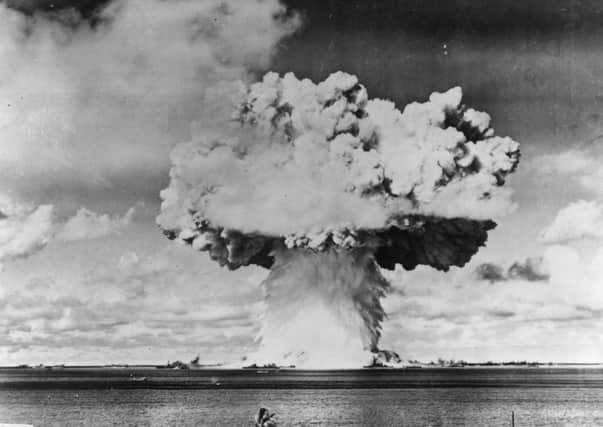Atomic bomb tests during Cold War ‘changed rainfall patterns in Scotland’


Even though the detonations carried out in the 1950s and 1960s occurred in remote areas, the scientists said these tests resulted in changes to rainfall patterns in certain parts of the UK, despite being thousands of miles away from those sites.
A team of researchers from the universities of Reading, Bath and Bristol looked at historic rainfall records between 1962-64 from research stations in London and Scotland.
Advertisement
Hide AdAdvertisement
Hide AdThey found clouds were “visibly thicker” and there was “24 per cent more rain on average” on the days when there was more radioactivity in the Shetland Isles.
Giles Harrison, a professor of atmospheric physics at the University of Reading and lead author on the study, said: “By studying the radioactivity released from Cold War weapons tests, scientists at the time learnt about atmospheric circulation patterns.
“We have now reused this data to examine the effect on rainfall.
“The politically charged atmosphere of the Cold War led to a nuclear arms race and worldwide anxiety.
“Decades later, that global cloud has yielded a silver lining in giving us a unique way to study how electric charge affects rain.”
Radioactivity is the emission of radiation originating from a nuclear reaction. It can also arise from the spontaneous decay of unstable atomic nuclei.
The phenomenon can lead to an increase in air conductivity in the atmosphere through a process known as ionisation, releasing electric charge.
Scientists have long suspected electric charge in the air can affect the way water droplets combine in the clouds, which in turn can influence rainfall.
Advertisement
Hide AdAdvertisement
Hide AdHowever, these changes have been difficult to observe from modern-day weather information.
The team turned to the radioactive legacy of the Cold War nuclear arms race and combined bomb test data with historical weather records gathered from stations at Kew near London and Lerwick in the Shetland Isles.
Although thousands of miles away from the detonation sites in the US and around the world, rainfall patterns in the Shetlands showed “significant changes” during the test period as radioactive pollution spread widely throughout the atmosphere.
The findings are published in the journal Physical Review Letters.
Comments
Want to join the conversation? Please or to comment on this article.